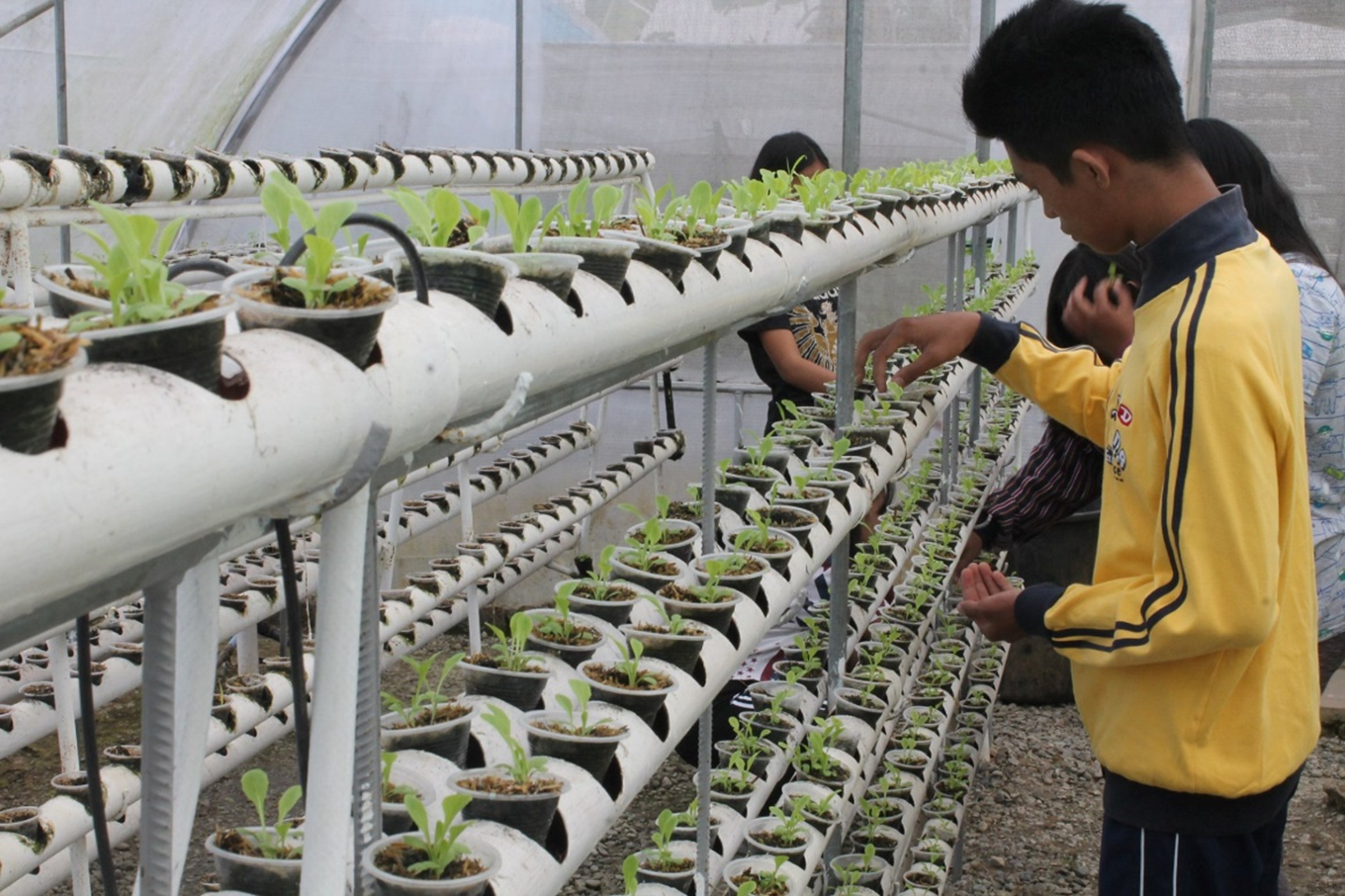News and Articles
‘Soilless Vegetable Gardening’: Another means of crop battlefield
Photo Courtesy: CLSU Hydroponics Aquaponics FB Page
Infected with a complex strain of technological and economic crisis, the Philippine vegetable industry has been referred to in an almost ‘comatose’ condition for so many years, and it threatens the country’s food security.
Some experts say that the present system of local agriculture is no longer suitable, especially in the vegetable industry, wherein, there’s the fast-growing population, increasing hunger demand, rapid development of rural areas to become urban jungles, global warming, and climate change.
Facing these difficulties, different agencies of government have responded and embarked on several projects that would lessen its impact by turning to science and technology.
Hydroponic [from the Greek words ‘hudor’ for water and ‘ponos’ for work, means ‘water working’] is not a new design of gardening/farming in the country but it is one of the smart agricultural technologies that can help the country ensure food security and to be climate resistant in the future.
Through this modern concept, Dr. Chito Sace of Hydroponics and Aquaponics Technology of the Central Luzon State University (CLSU) in Muñoz, Nueva Ecija, introduces another means of crop battlefield, known as Hydroponic Household Garden, it is a complete set of hydroponic system for leafy vegetables and herbs that one can easily manage even in the backyard.
Photo Courtesy: CLSU Hydroponics Aquaponics FB Page
This simple plant factory which can produce up to 360 plants per one square meter area takes place in a protected and controlled structure such as a greenhouse, that is funded by the Department of Science and Technology - Philippine Council for Agriculture, Aquatic and Natural Resources and Development (DOST-PCAARRD).
Hydroponic Household Garden is a ‘soilless vegetable gardening’ model that uses a ‘one pump rule’ system, where one pump takes the water from the tank full of nutrient solution to the highest portion of the growing system. After 30 days or less, according to Dr. Sace, leafy vegetables and herbs are ready for harvest.
Produce more, water conservation, and energy conservation, are the three major benefits of this smart agricultural technology.
Dr. Sace recommends [in one of his video presentations] that the success of hydroponic garden is through passion and study of farming or gardening, because it is very simple and easy to manage since the production is a cycle, just like how a crop is planted in soil, except the extra work such as hoeing, weeding, and watering.
Hydroponics as precision and smart technique, hopes to provide economic welfare to local farmers, as well as the citizens who are also consumers and the next generation.
Indeed, learning science and new technology is beneficial as well as entertaining, particularly if it is in a form of recreation; an example of which is hassle-free gardening using hydroponics.
Engage with us on the one-week celebration of National Science and Technology Week from 22-28 November 22-28, that will happen virtually, the second time around!
The one-week celebration full of science, technology, and innovation carries the theme, ‘’Agham at Teknolohiya: Tugon sa Hamon ng Panahon’’, that will surely benefit its participants with the exciting S&T contents through webinars and forums and other enriching activities.
For more information, visit the NSTW website at http://nstw.dost.gov.ph/ .
You can also check and follow the NSTW Facebook page at https://web.facebook.com/nstwdost to be more updated.
FEATURED NEWS
17 NOV 2022
Sec. Solidum banners local technologies and innovations in the 2022 NSTW hybrid celebration21 OCT 2022
DOST showcases fishery, agro-forestry, ecotourism technologies during Caraga science fair
CONTACT US
Science and Technology Information Institute (STII)
Technology Application and Promotion Institute (TAPI)
(02) 837-2071 loc.2162
nstw.secretariat@gmail.com
(02) 837-2071 local 2148
nstwpromotions@gmail.com

